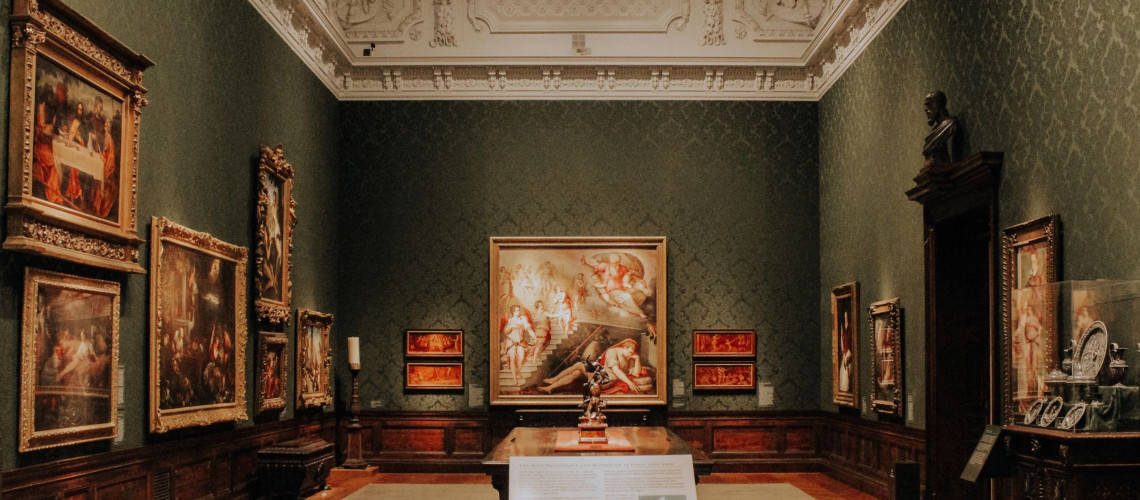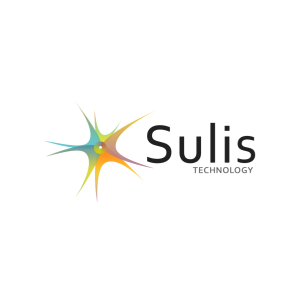Temperature and humidity monitoring in museums:
Monitoring the environment in museums is a fundamental task. This article will explain the purpose of monitoring the museum environment and explain the basics of monitoring temperature and relative humidity. We’ll also describe the equipment that is available, how to use it, check it, and how the results might be useful.
Temperature Monitoring: How often should you take readings?
To get a complete picture about the museum environment, you need to monitor temperature, humidity and other environmental factors. You should monitor and record them continuously 24 hours per day. Because the relative humidity and temperature can change rapidly on a daily basis, weekly or annually, this is important.
This is due to a variety of reasons. Natural changes in the outside climate and weather conditions often reflect inside museum buildings. Add to that the effects of lighting, heating and visitors, and the indoor environment can become quite varied. Museum objects are most affected by temperature extremes or fluctuations.
What temperature monitoring equipment should I use?
Relative humidity and temperature are closely linked and can often be measured using one instrument. The temperature is expressed in Celsius degrees (oC). Relative humidity (%RH) is expressed in degrees Celsius. There are many types of monitoring equipment on the market. Prices vary depending on their complexity, reliability, accuracy, and function. Cloud based wireless temperature monitoring systems aggregate data across all sensors and upload the cloud so that a true picture can be gained on site or remotely, these commercial systems also send alerts when a temperature rises or falls more than a set threshold. When picking a system of this nature it is extremely important to ensure the devices send regular data updates and have built in storage for wifi disconnections, you should always check with a supplier how often the base station cycles and what backup protection is in place.
Continuous recording instruments – Wireless temperature monitoring.
To indicate temperature changes, thermohygrographs use both a bi-metallic (which indicates temperature change) and a bundle human hair that expands or contracts according to its moisture content (which will be explained later).
Changes in humidity are indicated by changes in the humidity. These changes are recorded on a chart which rotates on a drum for a set time. This provides a continuous reading of the changing environment, which is easy to understand. It is best to keep these instruments in one place, as moving them around could cause problems with the calibration.
Data loggers, hard-wired systems and cloud based wireless temperature systems
These instruments are equipped with electronic sensors that measure temperature and humidity. These sensors are less susceptible to movement, so they can be moved often without affecting the calibration. These instruments log and record readings frequently and store them on the logger or on a PC. To download data-loggers, they must be connected to a computer regularly. Hard-wired and radio-linked systems transmit the data to a computer so that it can be viewed on-screen instantly. These systems can be connected to network multiple buildings from one central point. They can also provide instructions for controlling the museum environment, such as dehumidifiers and radiators.
Spot reading instruments whirling or aspirated hydrometer
The instrument, once common, is composed of two thermometers: a wet and dry bulb. These are used to measure temperature and calculate humidity. The measurement can be very precise, but it is possible for human error to cause misleading results.
Hygrometers electronic
These instruments are equipped with electronic sensors that detect changes in humidity and temperature. These instruments are slower to respond than a whirling hydrometer which can provide an instant reading. Because they are lightweight and easy to use, they are frequently used for spot-readings.
Dial (or “hair”) Hygrometer
This instrument uses a lot of hair, similar to the recording thermohygrograph. It indicates relative humidity on a dial with a “clock face”. The thermohygrograph can be tampered with by movement.
Cards indicating humidity
These cards are made up of patches that have been coated with cobalt chloride. They change in colour depending on the humidity level. Although they can provide an indication of humidity levels, the cards are not as accurate as the instruments above. These cards can be used to monitor humidity levels in a display case, or in a store box of archaeological material.
Temperature Monitoring Accuracy and Calibration
Every instrument is subject to error. This is often referred to as accuracy. These are the most important principles to keep in mind.
Any RH monitor can only give a guide within a few per cent of the actual humidity level. This may often be written as “e.g.” +/- 3%.
This could mean that two monitors reading correctly can have a difference of up to 6%
This error cannot be prevented, but it can be minimized by calibrating monitors and reading them correctly.
What is the difference between checking and calibrating?
To read accurately, instruments must be calibrated correctly. New instruments are often calibrated by the manufacturer, but after some time, they can drift. Calibration checking is used to determine how big the drift is. It is possible to correct drifts sometimes, but it is often better to just note the issue and not attempt to fix it. Modifying the instrument can cause it to wear out faster and lead to greater drifting. Calibration is used to verify that an instrument reads against a known absolute standard. A poorly calibrated instrument can give inaccurate results or even misleading results.
While museum staff and volunteers can perform some calibration tests, some testing must be done by registered laboratories.
If the instrument you have checked is not calibrated properly, you can send it off for repair or replace it with another one.
Electronic instruments can have a short life span. The equipment and software may become obsolete. Manufacturers cease providing support, even though the system is still working well. It is best to plan to have systems replaced within 10 years. Manufacturers may offer part-exchange for their radio-telemetry equipment and sensors.
What to monitor?
Monitors should be placed in every area of the museum where collections are kept, including display and store areas. There are many factors that can influence the locations you choose, but your monitor only provides information about the environment in which it is located. The sensor, which is the part of an instrument that reacts with the environment, should be placed in the middle of the area you wish to monitor. Avoid placing instruments on the floor, next to a heat source, near humidifiers / dehumidifiers, or near doors or windows. You should also avoid placing instruments where they could be accidentally dropped or damaged.
Record keeping
Equipment, such as a thermohygrograph, can provide a graphed summary over time. You can also summarise daily spot readings graphically, using either a computer or drawing by hand. Daily records are very valuable and can provide you with lots of information. Don’t ignore this method of monitoring.
Record summaries should be considered only that. You will still need to add commentary to explain the meaning for your museum. It is much easier to begin interpreting what you see by taking notes about events, weather, and other details.
You can see patterns in the data. It is easy to see how opening museum doors to the public (or press) can affect the RH inside. It is also clear that there is a higher RH on rainy days indoors. The graph might look something like the following:
It is easier to see patterns in graphs than in tables so graphing data can prove very useful for interpretation. You will soon be able to read charts and comment on relationships with practice. There is a 24-hour gap between readings in the table. The information can be merged with the dots to create a chart. However, this could be misleading. The thermohygrograph records continuously, and data from spot readings can’t give you information about the entire museum environment. This is why cloud-based wireless temperature monitoring is so effective.
You don’t have to collect single charts when you do environmental monitoring. Instead, you could be collecting many over the course of months or years. Analyzing large quantities of raw data allows you to identify long-term patterns. Analyzing data is essentially the same as interpretation but it’s done quantitatively using numbers and statistics. We interpret and analyse data.
The purpose of what you want to accomplish will dictate how you interpret the data. These are the basic questions you should ask yourself if this is your first time monitoring. These are:
What percentage of RH is outside the recommended band?
What is the temperature and RH variation each week (month/year)?
This type of analysis is possible with computer-based systems, but you can also use computer spreadsheet packages and drawn graphs to analyze raw data you have input manually.
Reporting – What and How?
This is a critical stage in the monitoring process. It is only by reporting on the information you find that you can make improvements. You should use your findings to plan for improvements. This means you must report to those in your organization who make decisions about forward planning and budgets.
An annual report can be a valuable tool that will allow others to assess how the environment has changed over time. Short-term monitoring projects should be reported once the results have been interpreted.
You can make recommendations that will help others to find solutions in your report. If your monitoring report shows that the RH is too high in the museum, whether it’s winter or summer, it might be a good idea to create a list of options to improve the situation.
Final analysis
The monitoring of humidity and temperature in museums should not be considered an end in themselves. It is a tool that can be used to help manage the environment.
The following are the keys to successful monitoring of temperature and humidity:
- Protect collections
- Reduce museum operating costs
- Train staff and volunteers to learn conservation skills
- Support funding applications
- Inform improvement projects.


